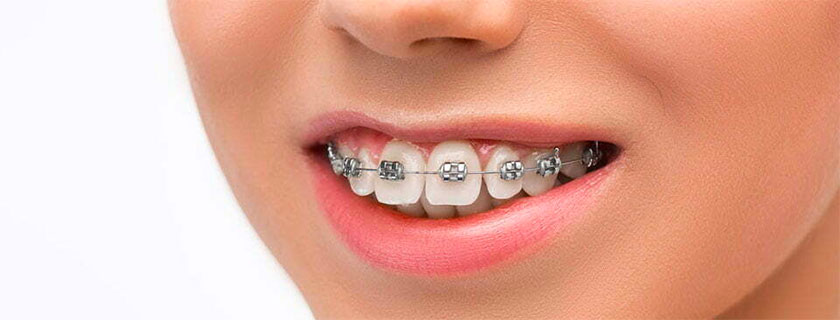
It is the branch of dentistry that regulates the crooked teeth and incompatible jaw relations with the help of a number of apparatus. Dentists who undertake orthodontic treatment are called orthodontists. Orthodontic treatment is applied during the milk teeth period, and the problems that arise due to habits such as thumb sucking and lip biting are eliminated during this period.
With orthodontic treatment, a permanent disorder in the skeletal structure of the jaw is prevented. Mixed dentition is also covered by orthodontics. During this period, both milk teeth and permanent teeth are present in the mouth. Space stenosis occurs when milk teeth are lost early and cannot guide the permanent teeth from below. Orthodontics deals with the elimination of these narrow spaces. At the same time, jaw development continues in this period.
The incompatibility between the jaws that occurs as a result of the development of the lower and upper jaws not occurring in harmony with each other is also within the scope of orthodontics. In the period of permanent teeth, orthodontics deals with the correction of the disorders in the tooth rows. Treatment of irregularities due to gingival diseases and the treatment of congenitally missing or subsequently lost teeth are also included in the scope of orthodontics.
Orthodontic treatment is divided into two as fixed and removable orthodontic treatment according to the way it is applied:
Fixed Orthodontic Treatment
Fixed orthodontic treatment, as the name suggests, is an orthodontic treatment using fixed appliances that the patient cannot remove. In fixed orthodontic treatment, a corrugated metal called bracket (porcelain brackets are also used today) are adhered to the teeth. A wire passes through this groove. This wire is replaced at intervals of 4-6 weeks.
Removable Orthodontic Treatment
Removable orthodontic treatment is orthodontic treatment in which appliances that the patient can put on and take off. Removable orthodontic treatment is mostly applied in children between the ages of 6-12. In some cases, it may be necessary to apply both fixed and mobile orthodontic treatment methods.
FAQ
Considerations During Orthodontic Treatment
Before starting orthodontic treatment, all caries and gum diseases in the mouth should be treated. Regardless of the form of fixed orthodontic treatment or removable orthodontic treatment, oral hygiene should be considered during orthodontic treatment. If a removable orthodontic appliance is used, the appliance should be removed and the teeth should be brushed after meals. The hygiene of the orthodontic appliance should be given the same attention.
Brackets used in fixed orthodontic treatment are very suitable areas for the accumulation of food residues. For this reason, food residues between brackets and wires are carefully cleaned by using orthodontic toothbrushes after meals. If oral hygiene is not taken care of, it is inevitable that caries and gingival problems will occur during orthodontic treatment.
Orthodontic treatment is a long-term treatment and there are monthly check-ups. For this reason, the person should be willing for orthodontic treatment and should not miss their appointments. In case of any breakage, rupture or dislocation of the orthodontic appliance used in any way, it is necessary to consult an orthodontist without wasting time, as the treatment may be adversely affected.
Reinforcement treatment is very important in orthodontic treatment. Reinforcement treatment must be strictly followed in order to maintain the position of the teeth.
What are Orthodontic Treatment Methods?
1- Metal Bracket
Advantages of Metal Bracket System: l It is more economical than other systems. l It gives faster results than other systems. l The bracket is durable and less likely to be damaged.
Disadvantages of the Metal Bracket System: l Compared to other treatment options, it can be considered a disadvantage if it is more prominent on the teeth.
2- Aesthetic Bracket
Advantages of the Aesthetic Bracket System: l Its biggest advantage is that it is more aesthetic and less noticeable. l Allergic reactions to metal in some people are not seen in ceramic systems.
Disadvantages of Aesthetic Bracket System: l It is more costly than metal bracket systems. l May be slightly more fragile than metal brackets. l It gives slower results compared to metal wires. (However, this slowness is expressed as a period of 2-3 months. Extending the treatment period of 1-1.5 years by 2-3 months may not be a time that will make much difference for the patient.)
3- Invisalign Transparent plate
Traditional braces are made of stainless steel. Metal brackets are adhered to the teeth and the teeth are strengthened by the wires attached to the brackets. With the applied forces, the teeth are moved to their desired positions.
The type of clear braces is similar in concept, but the braces are made of ceramic, not metal. Ceramic is transparent, so they are much less noticeable in your mouth. Archwires can also be transparent to increase their cohesion.
Clear braces work the same as conventional braces, so they are suitable for the majority of patients who need orthodontic correction. However, clear braces are more costly and more sensitive than conventional braces. Your orthodontist will tell you if clear braces are suitable for your situation.
It is recommended for patients who do not want to wear clear aligners, braces and want the correction of crookedness in their teeth. The dental plaques that are specially produced for the person and that cover all the teeth in a transparent way are called transparent plaque, which allows the correction of the crowding in the teeth with an invisible transparent plaque.